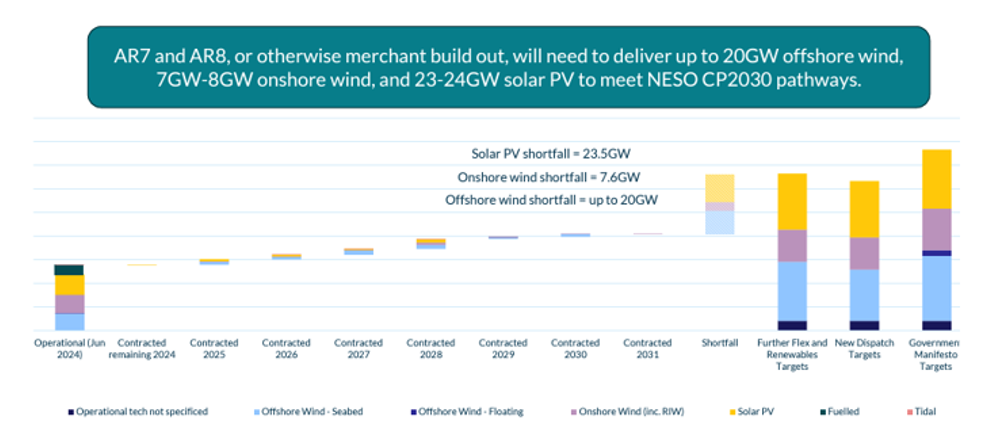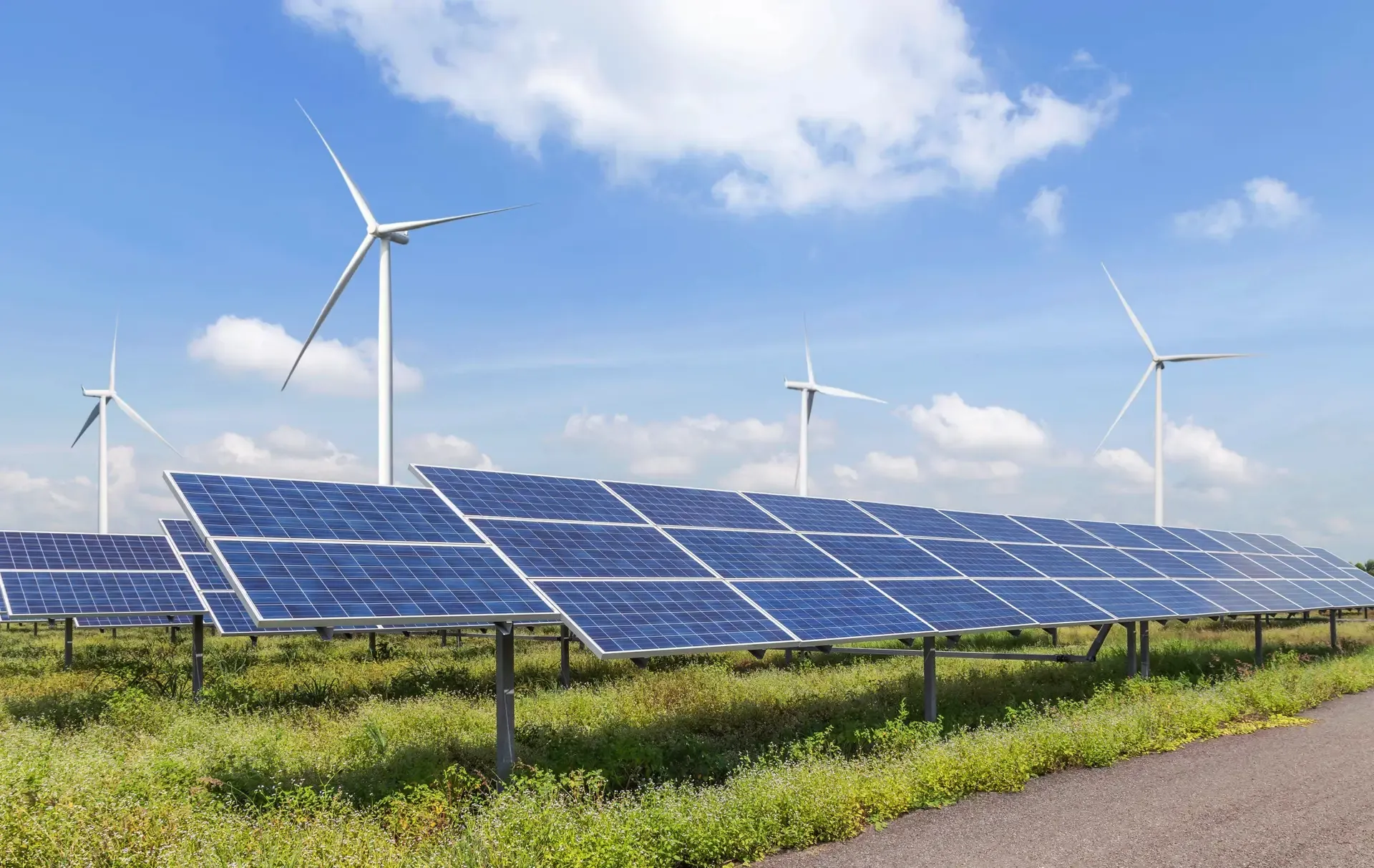The government's target is ambitious, and the scale of renewables procurement needed in the next two auctions would be nothing short of record-breaking.
Tim Dixon Senior Consultant
The next Contract for Difference (CfD) auctions will demand a historic level of renewable energy procurement to meet the government's 2030 clean power target, according to new analysis from Cornwall Insight.
The data confirms that both the auction rounds in 2025 and 2026 (AR7 and AR8) must at least double this year’s auction total for onshore wind, offshore wind and solar, which itself set a record for capacity, if clean power goals are to be reached.
To achieve the 2030 objectives, the two auctions combined need to deliver up to 20GW of offshore wind, 7–8GW of onshore wind, and 23–24GW of solar PV. However, there may also be some limited scope for solar and wind projects procured in AR9 (2027) to be commissioned by 2030.
While the most recent AR6 auction secured record levels of capacity—5GW of offshore wind, 900MW of onshore wind, and 3.3GW of solar PV— these figures fall significantly short of what’s needed in the next two years. Meeting the ambitious targets will demand an allocation round budget in line with the scale of the challenge, alongside a surge in new project developments to come through the pipeline.
DESNZ has recently announced plans for minor reforms for AR7, which may include relaxed offshore wind eligibility criteria and longer contracts, with consultations set for early 2025. However, major CfD reforms will not occur until AR9 in 2027, and while AR7 is expected to have a sufficient budget, the precise figures remain unclear and may depend on wider auction parameters.
While the announcement that a decision across the Review of Electricity Market Arrangements (REMA) programme will be released before AR7 may bring some relief to investors, tight timelines and persistent market uncertainty make the 2030 target increasingly difficult to achieve.
Other challenges including funding shortages, international competition for investment, long grid connection queues, protracted planning permission processes, and supply chain bottlenecks all risk slowing progress.
The government has highlighted the recent NESO report as evidence that meeting the 2030 clean power goal is still possible. However, the report stresses "it will only be achieved with bold action and sustained momentum, across every area and every step of the way between now and 2030".
Although there's considerable doubt on the achievability of the Clean Power 2030 target, the initiatives being conducted as part of it present a huge opportunity for the industry and to reduce sector emissions at a faster rate.
Figure 1: AR7 and AR8 renewables targets to meet Clean Power 2030 pathways

Source: Cornwall Insight
Tim Dixon, Senior Consultant at Cornwall Insight:
"The government's target is ambitious, and the scale of renewables procurement needed in the next two auctions would be nothing short of record-breaking. The 2030 clean power goal is increasingly looking out of reach unless there is a dramatic shift in the pace of renewables procurement across the sector.
"While NESO has stated that achieving the goal is technically feasible, this might not be the strong endorsement the government is presenting it as. NESO has highlighted the monumental scale of action needed—spanning increased budgets, expedited planning permissions, and reforming connection queues, among other challenges. The likelihood of aligning all these elements in time is extremely challenging.
"However, we shouldn’t let the difficulty of meeting these targets overshadow the positive progress being made in the UK renewables sector. With growing investment in Contract for Difference auctions and a stronger emphasis on expanding low-carbon technologies, we have a real opportunity to drive down emissions and move closer to our 2050 net-zero ambitions as a result."
- Ends

